Communications Receiver
Copyright 2003, Alan R. Klase. All rights reserved.
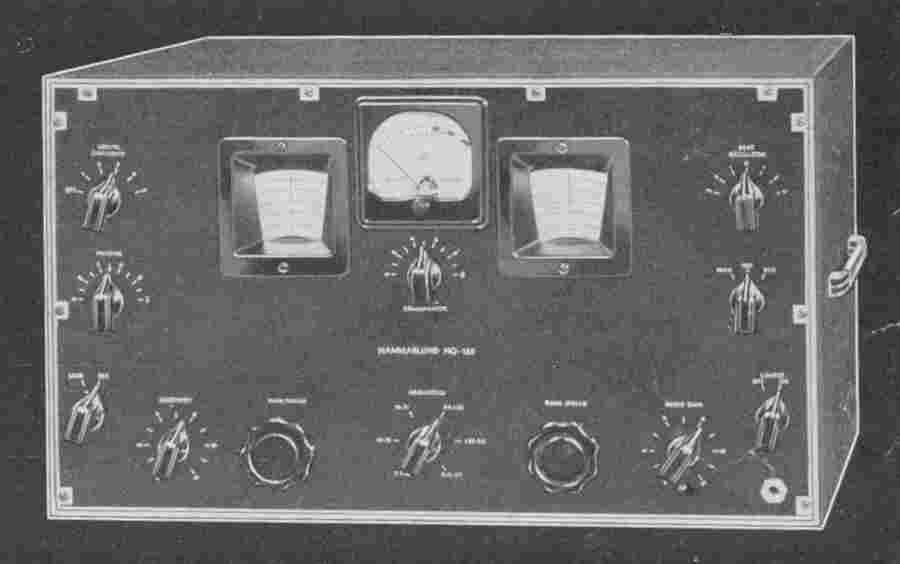
| Hammarlund
HQ-120 Communications Receiver Copyright 2003, Alan R. Klase. All rights reserved. |
 |
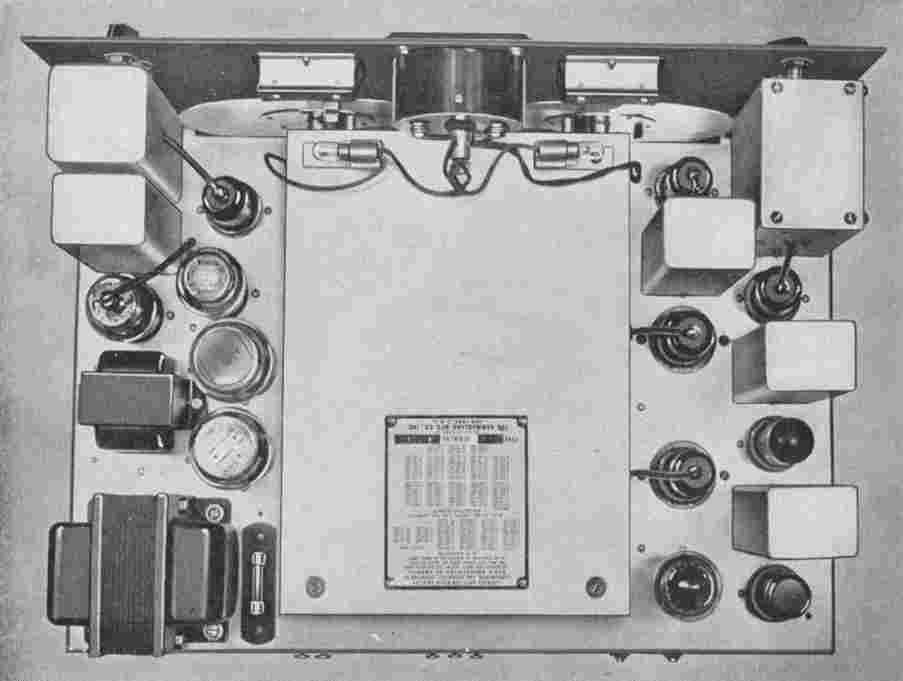 |
Circuit Changes One RF stage rather than
two. A higher-transconductance tube (6S7) and
front-panel "ANTENNA COMPENSATOR"
narrowed the performance gap.
Local-oscillator and mixer functions were combined in RCA's hot new 6K8 tube designed specifically for short-wave applications. A V-R tube stabilizes the local-oscillator, BFO, and amplifier-screen voltages. A lower-power single-ended 6V6 audio amp allowed the power supply to be reduced in size and brought into the main receiver, |
|
| HQ-120
Schematic |
|
|
|
||
|
The state-of-the-art in
rotary switchs was now sufficiently advanced to
allow their use in band selection. This eliminated the expensive
cam
and knife-switch arrangement of the Super-Pro. There are now six
bands
covering the broadcast band through ten meters. You had to opt
for one
or the other in the 'Pro.
Each gang of the main-tuning capacitor has two sections. Both are used to allow the entire broadcast band to be covered in on range. Only one section is engaged on the higher bands to keep the tuning rate within reason. As in the Super-Pro, each bandspread-gang has three sections to allow optimal band-spread range for the selected band. |
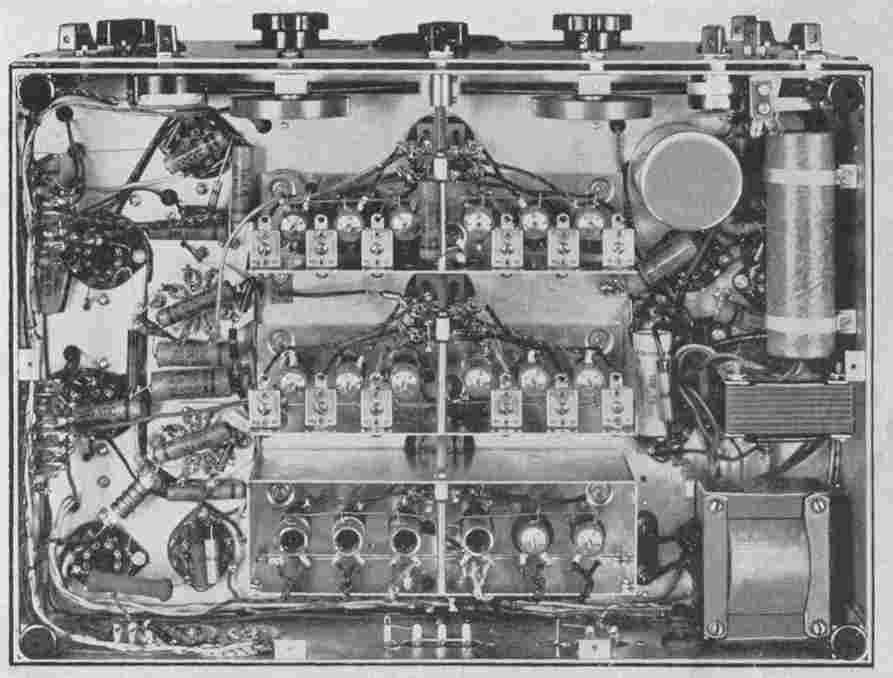 |
|
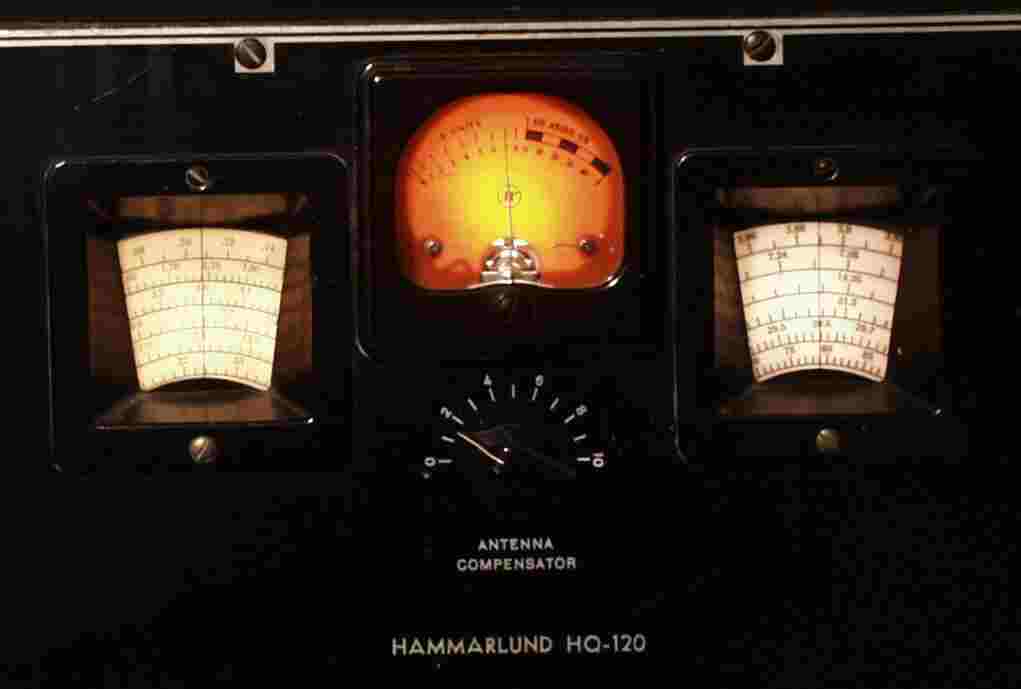 The HQ-120 also has a
much improved S-meter compared to the Super-Pro and most other
receivers of the period. It reads 0-9 and dB over 9, and has both
zero and
range adjustments.
|
Gearing
was added between the main-tuning and band-spread dials and associated
capacitors.
This material improvement over the Super-Pro increased the drive ratio
from 5:1 to 8:1, and allowed the scales to occupy 310 degrees of the
dial, rather than 180, giving greater resolution. The mask on the main-tuning dial has been eliminated, but the band-spread dial is now calibrated for the amateur bands: 80, 40, 20, and 10 meters. If one sets the bandspread dial to a known frequency, e.g., his transmit-crystal frequency, and tunes the set in with the main-tuning knob, the band-spread dial will now be accurate and easily readable for that entire ham band. This is the first application of "calibrated electrical band-spread" a feature that would become standard on better amateur sets for years to come. |
|
| An
improved crystal filter make it's debut. Switch selectable
resistors in the grid
circuit of the first IF stage widen the crystal filter's response in an
easily controlled manner to the point of making it usable on phone
signals as well as CW. To date, most crystal filters were narrow,
ringy, and hard to adjust. This circuit then found it's way back
into the Super-Pro 200's. The HQ-120 also sports an effective noise limiter, a very worth-while addition in the days of non-noise-suppressed automobile ignitions. This is another HQ-120 innoviation that made it's way back into the Super-Pro. |
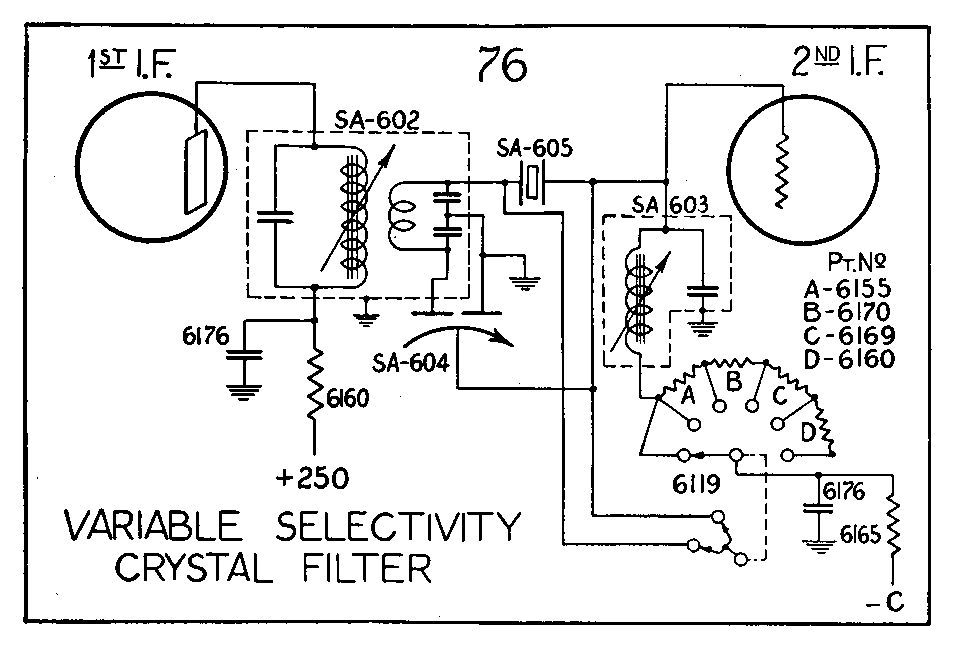 |
|